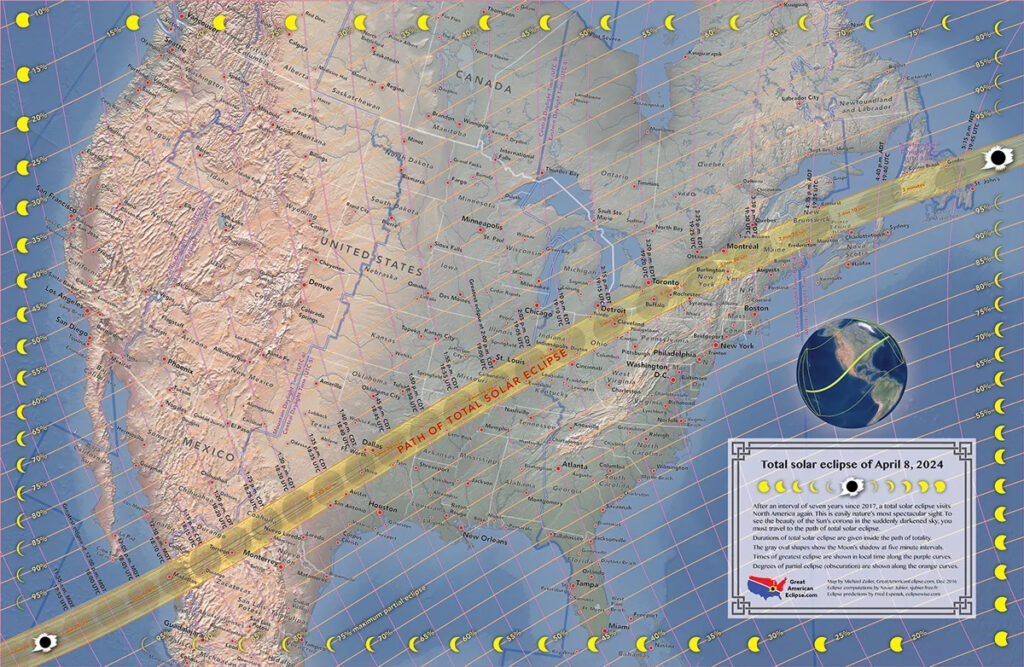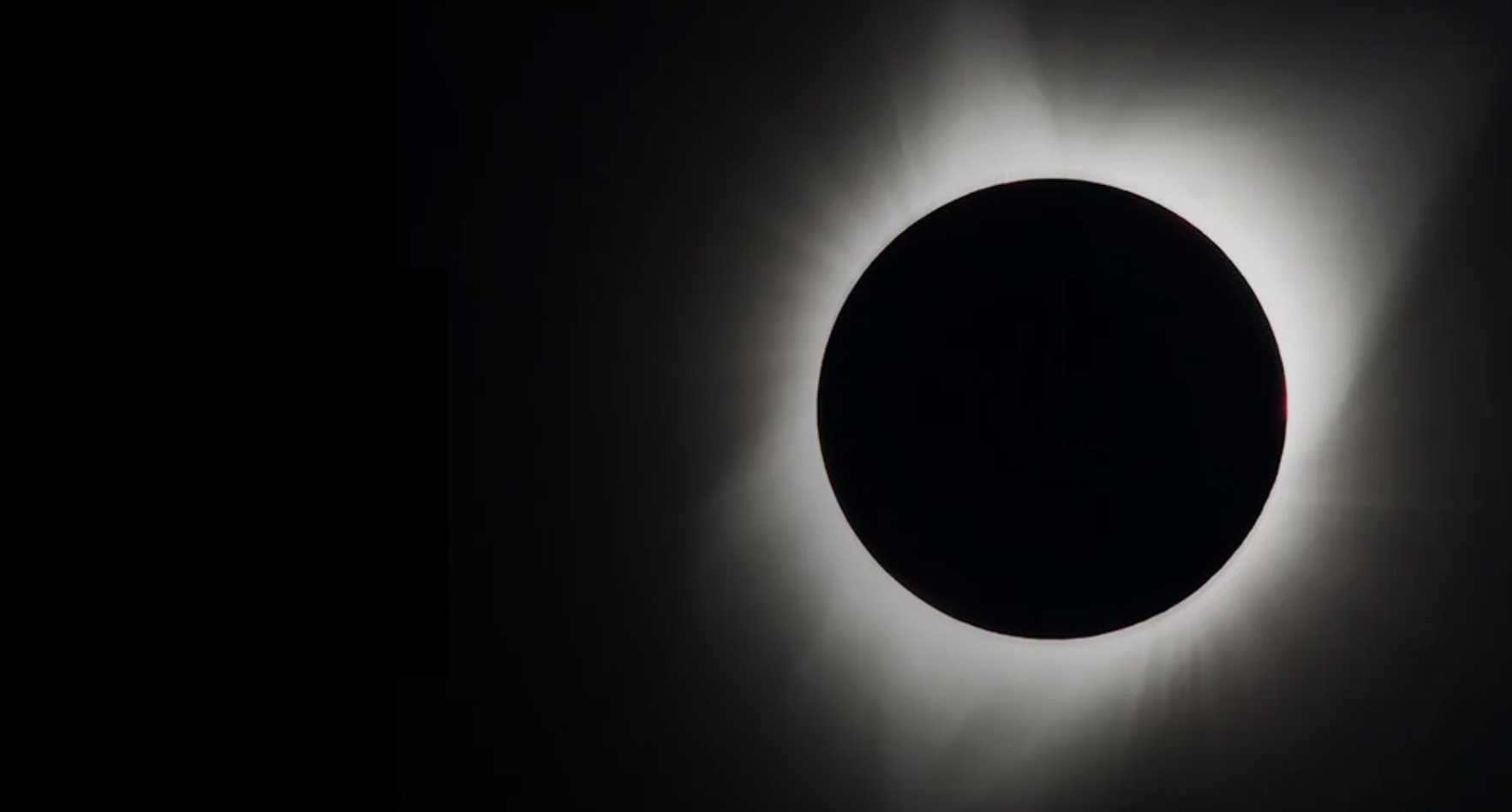Where Can I Watch The 2024 Solar Eclipse. A solar eclipse occurs when the moon passes between the Earth and the sun, temporarily blocking all or part of the sun’s light. This phenomenon results in a temporary darkening of the sky during the day.
Solar eclipses are remarkable natural events, and there are three main types:
- Total Solar Eclipse
- Partial Solar Eclipse
- Annular Solar Eclipse
Solar eclipses are relatively rare events in any given location and can only be observed in specific regions during a particular eclipse. They are often celebrated by astronomers and skywatchers and have been the subject of fascination and cultural significance throughout human history.
It’s important to note that looking directly at the sun during a solar eclipse, whether it’s partial or annular, can cause serious and permanent eye damage. Always use proper eye protection such as eclipse glasses or solar filters when observing a solar eclipse.
Table of Contents
Where Can I Watch The 2024 Solar Eclipse
The total solar eclipse expected to occur on April 8, 2024, will be visible from several regions in North America. The path of totality, where the eclipse will be most complete, will extend from Mexico through the United States and up into Canada. Some of the major cities and areas within or near the path of totality include:
To get the best experience of the total solar eclipse, you should position yourself within the path of totality. Be sure to check the precise timing and location for your specific area as the duration of totality will vary along the path. Always use proper eye protection, such as eclipse glasses or other recommended devices, to view the eclipse safely. You can also check with local astronomical clubs, observatories, or event organizers for eclipse viewing events or guidance on the best places to observe the eclipse in your region.

Location To Watch The Solar Eclipse 2024
| Location | Partial Begins | Totality Begins | Maximum | Totality Ends | Partial Ends |
|---|---|---|---|---|---|
| Dallas, Texas | 12:23 p.m. CDT | 1:40 p.m. CDT | 1:42 p.m. CDT | 1:44 p.m. CDT | 3:02 p.m. CDT |
| Idabel, Oklahoma | 12:28 p.m. CDT | 1:45 p.m. CDT | 1:47 p.m. CDT | 1:49 p.m. CDT | 3:06 p.m. CDT |
| Little Rock, Arkansas | 12:33 p.m. CDT | 1:51 p.m. CDT | 1:52 p.m. CDT | 1:54 p.m. CDT | 3:11 p.m. CDT |
| Poplar Bluff, Missouri | 12:39 p.m. CDT | 1:56 p.m. CDT | 1:56 p.m. CDT | 2:00 p.m. CDT | 3:15 p.m. CDT |
| Paducah, Kentucky | 12:42 p.m. CDT | 2:00 p.m. CDT | 2:01 p.m. CDT | 2:02 p.m. CDT | 3:18 p.m. CDT |
| Evansville, Indiana | 12:45 p.m. CDT | 2:02 p.m. CDT | 2:04 p.m. CDT | 2:05 p.m. CDT | 3:20 p.m. CDT |
| Cleveland, Ohio | 1:59 p.m. EDT | 3:13 p.m. EDT | 3:15 p.m. EDT | 3:17 p.m. EDT | 4:29 p.m. EDT |
| Erie, Pennsylvania | 2:02 p.m. EDT | 3:16 p.m. EDT | 3:18 p.m. EDT | 3:20 p.m. EDT | 4:30 p.m. EDT |
| Buffalo, New York | 2:04 p.m. EDT | 3:18 p.m. EDT | 3:20 p.m. EDT | 3:22 p.m. EDT | 4:32 p.m. EDT |
| Burlington, Vermont | 2:14 p.m. EDT | 3:26 p.m. EDT | 3:27 p.m. EDT | 3:29 p.m. EDT | 4:37 p.m. EDT |
| Lancaster, New Hampshire | 2:16 p.m. EDT | 3:27 p.m. EDT | 3:29 p.m. EDT | 3:30 p.m. EDT | 4:38 p.m. EDT |
| Caribou, Maine | 2:22 p.m. EDT | 3:32 p.m. EDT | 3:33 p.m. EDT | 3:34 p.m. EDT | 4:40 p.m. EDT |
How To Watch Solar Eclipse Safely
Watching a solar eclipse can be a fascinating experience, but it’s essential to do so safely to protect your eyes. Looking directly at the sun, even during an eclipse, can cause serious and permanent eye damage. Here’s how to watch a solar eclipse safely:
- Use Solar Viewing Glasses
- Use Solar Filters for Telescopes and Binoculars
- Projection Method
- Specialized Solar Telescopes
- Live Streams and Broadcasts
- Attend Eclipse Viewing Events
- Never Use Homemade Filters
- Avoid Sunglasses and Unfiltered Cameras
Remember that even during a partial solar eclipse, it is not safe to look at the sun without protection. Your eyes can be damaged quickly, and the damage may not be immediately noticeable. Follow these safety guidelines to enjoy the eclipse without risking your vision.
FAQ
Where Can I Watch The 2024 Solar Eclipse?
- Mexico: The eclipse will begin in Mexico, and several cities in northern Mexico will witness the total eclipse, including Durango, Torreón, and Mazatlán.United States: In the United States, the path of totality will pass through several states, including Texas, Oklahoma, Arkansas, Missouri, Illinois, Kentucky, Indiana, Ohio, and New York. Major cities like Dallas, Little Rock, Indianapolis, and Buffalo will experience the total eclipse.Canada: The path of totality will also extend into parts of Canada, particularly in the province of Ontario. Some areas in Ontario near Lake Erie will witness the total eclipse.




